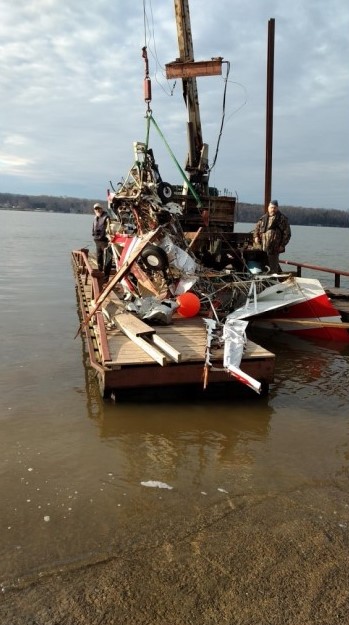
ASN Wikibase Occurrence # 220629
This information is added by users of ASN. Neither ASN nor the Flight Safety Foundation are responsible for the completeness or correctness of this information.
If you feel this information is incomplete or incorrect, you can submit corrected information.
| Date: | Monday 7 January 2019 |
| Time: | 13:34 |
| Type: |  Bellanca 17-30A Super Viking |
| Owner/operator: | Private |
| Registration: | N8849V |
| MSN: | 30376 |
| Year of manufacture: | 1971 |
| Total airframe hrs: | 2156 hours |
| Engine model: | Continental IO-520-K |
| Fatalities: | Fatalities: 2 / Occupants: 2 |
| Aircraft damage: | Destroyed |
| Category: | Accident |
| Location: | Soddy-Daisy, TN -
 United States of America United States of America
|
| Phase: | Manoeuvring (airshow, firefighting, ag.ops.) |
| Nature: | Private |
| Departure airport: | Chattanooga Airport, TN (1A0) |
| Chattanooga Airport, TN (1A0) | |
| Investigating agency: | NTSB |
| Confidence Rating: |
A witness saw the airplane fly over a lake and noted that the airplane made "a tight U-turn" at a low altitude, which he thought might have been an aerobatic maneuver. The airplane then spiraled straight down counterclockwise and impacted the lake. Video from a camera mounted to the airplane's right horizontal stabilizer confirmed that the airplane flew very low over water. Subsequent video showed that the airplane pitched up, rolled to the left, and entered a left spin before descending and impacting the lake. It is likely that the pilot had attempted a left wingover maneuver (in which the airplane makes a steep climb followed by a vertical turn and subsequent descent), but the airplane experienced an aerodynamic stall that led to the left spin near the top of the maneuver. The video revealed no evidence of a preimpact structural failure, flight control malfunction, or loss of propeller rpm. Additionally, postaccident examination of the airframe and engine revealed no preimpact mechanical malfunctions that would have precluded normal operation.
The pilot's toxicology results indicated that he had previously taken some cough and cold medications, including some that were potentially sedating. However, these medications were out of his system, as shown by the absence or low levels of these medications in the pilot's blood. Thus, the pilot's use of these medications was not likely a factor in this accident.
Probable Cause: The pilot's improper decision to attempt an aerobatic maneuver at low altitude, which led to an aerodynamic stall and spin from which the pilot could not recover.
Accident investigation:
 |
|
Sources:
NTSB
FAA register: https://registry.faa.gov/aircraftinquiry/NNum_Results.aspx?NNumbertxt=8849V
Location
Images:

Photo(c): NTSB
Revision history:
| Date/time | Contributor | Updates |
|---|---|---|
| 07-Jan-2019 22:00 | Geno | Added |
| 08-Jan-2019 00:11 | Geno | Updated [Aircraft type, Registration, Cn, Operator, Other fatalities, Phase, Source] |
| 11-Jan-2019 06:13 | gerard57 | Updated [Total fatalities, Total occupants, Source, Damage, Narrative] |
| 11-Jan-2019 07:56 | gerard57 | Updated [Source] |
| 15-Jan-2019 06:19 | RobertMB | Updated [Source] |
| 22-Apr-2020 17:01 | ASN Update Bot | Updated [Time, Nature, Departure airport, Destination airport, Source, Narrative, Accident report, ] |
| 06-Mar-2022 01:21 | Captain Adam | Updated [Location, Departure airport, Destination airport, Source, Narrative, Photo] |
Corrections or additions? ... Edit this accident description
The Aviation Safety Network is an exclusive service provided by:


 ©2024 Flight Safety Foundation
©2024 Flight Safety Foundation